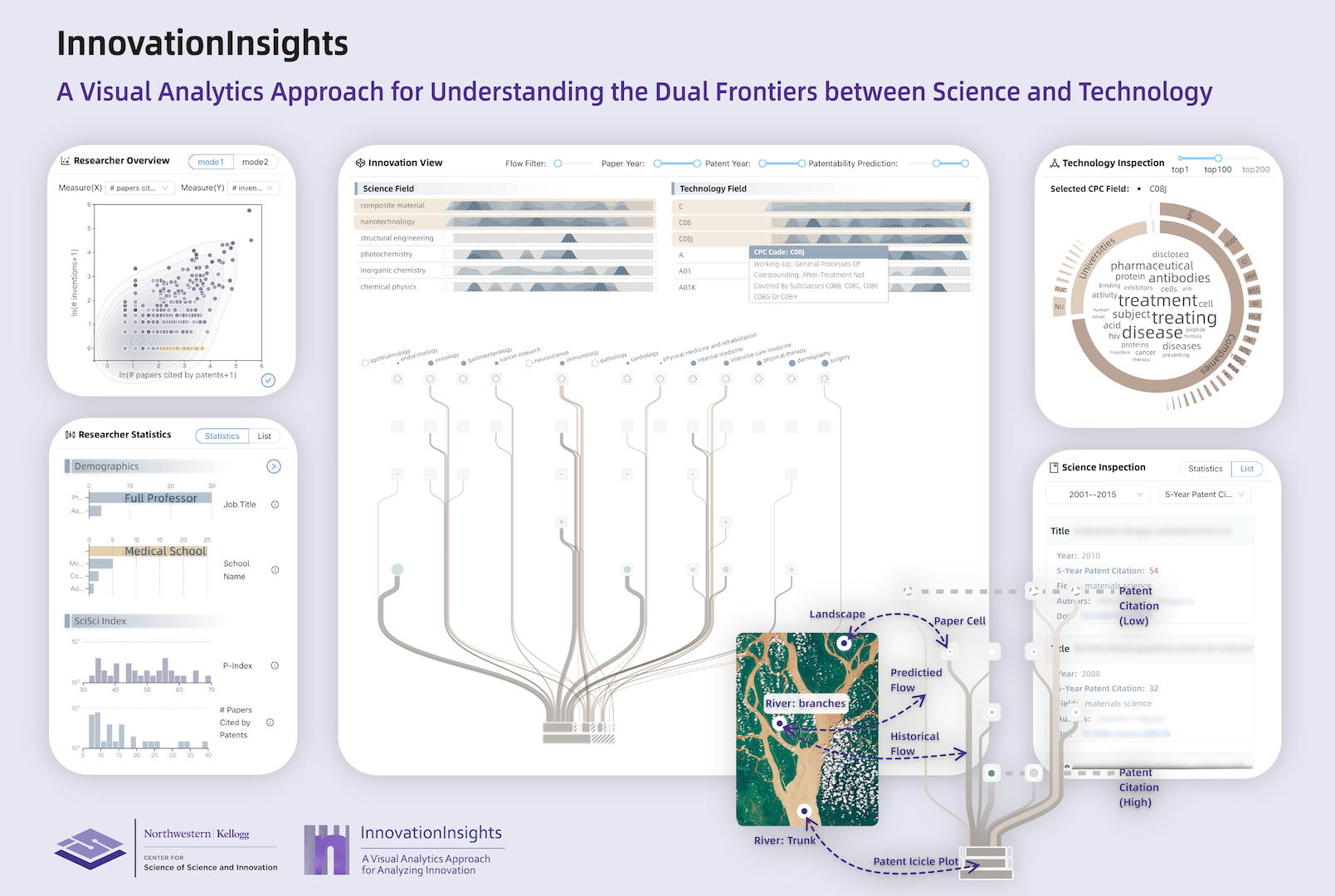Honorable Mention
InnovationInsights: A Visual Analytics Approach for Understanding the Dual Frontiers between Science and Technology
Yifang Wang, Yifan Qian, Xiaoyu Qi, Nan Cao, Dashun Wang
DOI: 10.1109/TVCG.2023.3327387
Room: 109
2023-10-25T03:00:00ZGMT-0600Change your timezone on the schedule page
2023-10-25T03:00:00Z

Fast forward
Full Video
Keywords
Science of Science, Innovation, Academic Profiles, Patent Data, Publication Data, Visual Analytics
Abstract
Science has long been viewed as a key driver of economic growth and rising standards of living. Knowledge about how scientific advances support marketplace inventions is therefore essential for understanding the role of science in propelling real-world applications and technological progress. The increasing availability of large-scale datasets tracing scientific publications and patented inventions and the complex interactions among them offers us new opportunities to explore the evolving dual frontiers of science and technology at an unprecedented level of scale and detail. However, we lack suitable visual analytics approaches to analyze such complex interactions effectively. Here we introduce InnovationInsights, an interactive visual analysis system for researchers, research institutions, and policymakers to explore the complex linkages between science and technology, and to identify critical innovations, inventors, and potential partners. The system first identifies important associations between scientific papers and patented inventions through a set of statistical measures introduced by our experts from the field of the Science of Science. A series of visualization views are then used to present these associations in the data context. In particular, we introduce the Interplay Graph to visualize patterns and insights derived from the data, helping users effectively navigate citation relationships between papers and patents. This visualization thereby helps them identify the origins of technical inventions and the impact of scientific research. We evaluate the system through two case studies with experts followed by expert interviews. We further engage a premier research institution to test-run the system, helping its institution leaders to extract new insights for innovation. Through both the case studies and the engagement project, we find that our system not only meets our original goals of design, allowing users to better identify the sources of technical inventions and to understand the broad impact of scientific research; it also goes beyond these purposes to enable an array of new applications for researchers and research institutions, ranging from identifying untapped innovation potential within an institution to forging new collaboration opportunities between science and industry.